
Art | Resources
South Street Linen
 Simple, colorful, creative clothing for women, designed by three women friends (all artists) who are committed to the re-emerging textile community in Maine. “We design clothes and objects we would like for ourselves and have discovered a whole world of women that love them the way we do.” Be sure to read this page about linen and watch “this beautiful video” to learn about the steps required to turn flax into linen. All linen. All season. All made in Maine.
Simple, colorful, creative clothing for women, designed by three women friends (all artists) who are committed to the re-emerging textile community in Maine. “We design clothes and objects we would like for ourselves and have discovered a whole world of women that love them the way we do.” Be sure to read this page about linen and watch “this beautiful video” to learn about the steps required to turn flax into linen. All linen. All season. All made in Maine.
Heart Grown Wild
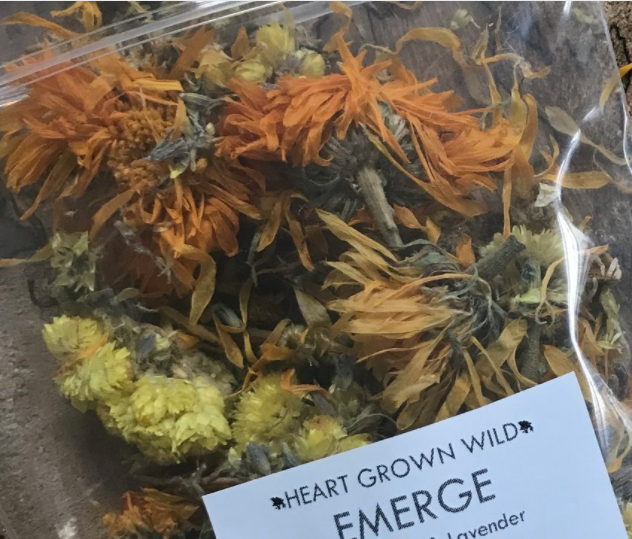 Natural, organic, handcrafted, plant-based skin and hair care products. “Our products are created with a strong foundation, knowledge and connection with the plants. It is our intention to bring that connection to the outside world into your daily self-care routines. This connection is important now more than ever in the world we live in.”
Natural, organic, handcrafted, plant-based skin and hair care products. “Our products are created with a strong foundation, knowledge and connection with the plants. It is our intention to bring that connection to the outside world into your daily self-care routines. This connection is important now more than ever in the world we live in.”
Apothecary 90291
 Effective chemical-free skin care made from 100% certified organic ingredients.” A set of oils, balms, and masks designed by a woman born and raised in Romania, the daughter of a biochemist mother and a musician father. So she was surrounded by some of the most beautiful women in Europe. Her organic products reflect her European background and the way things are done there, rather than what we expect in the US. Ingredients are chosen to cleanse and nourish. Oh, and by the way, 90291 is the zip code for Venice, California, where the temperature is ten degrees cooler. Ingredients.
Effective chemical-free skin care made from 100% certified organic ingredients.” A set of oils, balms, and masks designed by a woman born and raised in Romania, the daughter of a biochemist mother and a musician father. So she was surrounded by some of the most beautiful women in Europe. Her organic products reflect her European background and the way things are done there, rather than what we expect in the US. Ingredients are chosen to cleanse and nourish. Oh, and by the way, 90291 is the zip code for Venice, California, where the temperature is ten degrees cooler. Ingredients.
Uprising Seeds
 Vegetables, herb, flower, and grain seeds. I was really inspired by this website, starting with the name. “All our seeds are open-pollinated, certified organic by the USDA, and grown by small family farmers in the Pacific Northwest.And the list their growers Uprising Seeds is a small family run organic seed farm and the culmination of years of fresh market farming, variety trialing, seed production and breeding work, and most importantly, a decades-long love affair with food and its power to bring people together. Our ideal vision of seed sustainability involves farmers and gardeners as the stewards of the varieties that they depend on. We are therefore committed to strengthening the public commons of seed genetics by working to preserve and improve open-pollinated varieties keeping biodiversity strong through adaptability and resilience.” Flip through their beautiful catalog.
Vegetables, herb, flower, and grain seeds. I was really inspired by this website, starting with the name. “All our seeds are open-pollinated, certified organic by the USDA, and grown by small family farmers in the Pacific Northwest.And the list their growers Uprising Seeds is a small family run organic seed farm and the culmination of years of fresh market farming, variety trialing, seed production and breeding work, and most importantly, a decades-long love affair with food and its power to bring people together. Our ideal vision of seed sustainability involves farmers and gardeners as the stewards of the varieties that they depend on. We are therefore committed to strengthening the public commons of seed genetics by working to preserve and improve open-pollinated varieties keeping biodiversity strong through adaptability and resilience.” Flip through their beautiful catalog.
FruitBox
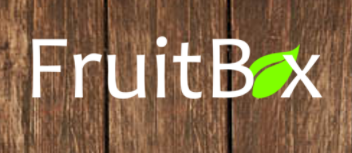 Third generation organic farmers offer their farm-to-door mixed fresh fruit boxes for immediate delivery and by monthly subscription. You box comes with 5-7 pounds of assorted citrus fruits and avocados.
Third generation organic farmers offer their farm-to-door mixed fresh fruit boxes for immediate delivery and by monthly subscription. You box comes with 5-7 pounds of assorted citrus fruits and avocados.
Big Tree Organic Farms
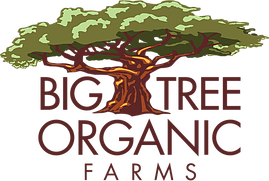 California-grown organic almonds sold whole (raw and roasted, and blanched), sliced, diced, ground into flour, meal, and butter. Also flavored with chocolate or lemon salt. Certified organic by CCOF and certified kosher. Their whole natural almonds are processed in an “almonds only” facility.
California-grown organic almonds sold whole (raw and roasted, and blanched), sliced, diced, ground into flour, meal, and butter. Also flavored with chocolate or lemon salt. Certified organic by CCOF and certified kosher. Their whole natural almonds are processed in an “almonds only” facility.
Inzana Ranch and Produce
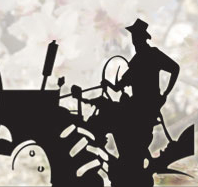 Raw organic unpasteurized almonds (shelled and in shell), organic walnuts, organic natural-color pistachios, sold separately or mixed with organic dried fruits. Dried fruits include organic cherries, kiwi, 24 varieties of figs, and even a sun-dried organic apricots without sufur that is orange, chewy, and sweet. All fruits and nuts grown on their CCOF certified organic ranch.
Raw organic unpasteurized almonds (shelled and in shell), organic walnuts, organic natural-color pistachios, sold separately or mixed with organic dried fruits. Dried fruits include organic cherries, kiwi, 24 varieties of figs, and even a sun-dried organic apricots without sufur that is orange, chewy, and sweet. All fruits and nuts grown on their CCOF certified organic ranch.
Xtrema vs Visions Cookware
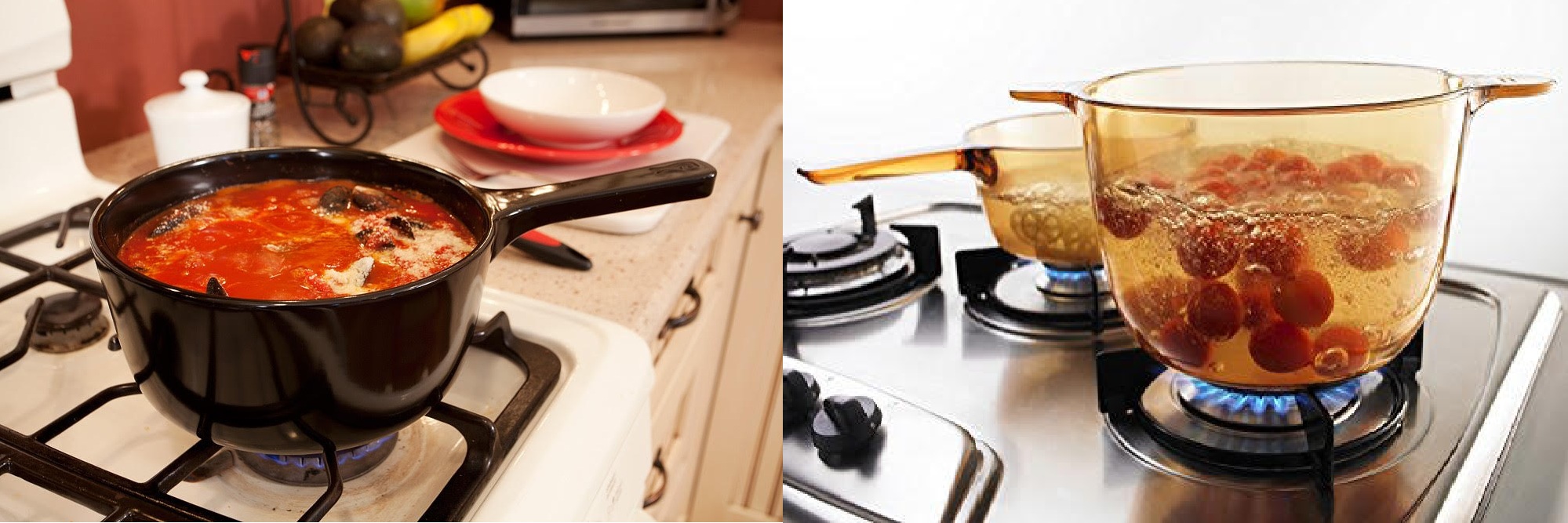
Question from Sue
Hi Debra,
I have very recently discovered the grim reality of stainless steel.
I have been doing a lot of reading and shopping. not sure how i found you but i am grateful!
I noticed that you recommend and use both visions and xtrema. the price difference is definitely a consideration for me.
I have found some used visions sets and single pieces on ebay . i have also seen the xtrema website and they have some nice sets which are on sale right now for mother’s day.
Ok here are my questions:
- are the xtrema/vision ware items very fragile?
- do you recommend one vs. the other? or are both good?
- does the vision ware age well? ie do scratches effect the food?
I am leaning toward the xtrema but i am totally open to the vision ware.
It is funny how learning about one thing changes everything! the whole thing started when i “saw” my super cheap, “stainless steel” tea kettle. it totally freaked me out!! haha! i am so ready to get rid of all the stainless steel in the house but first i must replace it.
Thank you so much for doing what you do. i am super excited to learn more from you.
Debra’s Answer
I use both Xtrema and Visions.
Xtrema is made of very fine ceramic.
Visions is made of glass. Visions is no longer being manufactured, but many pieces are available used at flea markets and online. Visions online.
I have 3 Visions pots that I’ve been using for 30+ years. I have about half a dozen pieces of Xtrema that I’ve been using since they’ve been available, I think about 10 years. I’ve never broken either of them.
I have a lot of glassware and pottery. These are not fragile in the sense of a fragile glass that would break if you tipped it over. They are both very “heavy duty”. That said, I once chipped my large X pot while washing it. I have a ceramic floor and I would imaging both might break if I dropped them on the floor, but that has never happened.
Both Xtrema and Visions are very good, each in their own way.
My Visions pots have aged very well. They are glass through and through so no problem with scratches.
Latex: Synthetic, Natural, Organic—Dunlop and Talalay
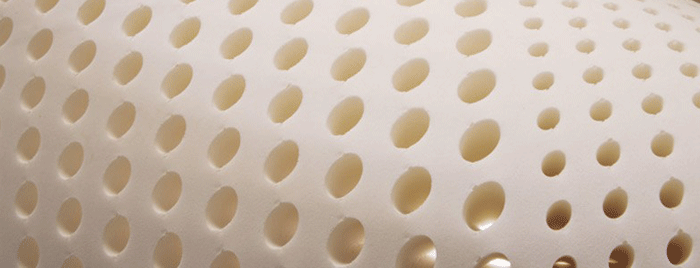
Question from Donna
Hi Debra,
I own three Savvy Rest mattresses (twin, full, and king) all made from Talalay latex as I prefer how that feels. You mention that Talalay is petroleum-based. Is that correct? Savvy Rest lists both Talalay and Dunlop as natural latex. Yikes! I’m pretty worried now that I have petroleum based latex in three very expensive beds.
Debra’s Answer
I did say that Talalay latex is petroleum-based. When you asked this question, I went back and took another look at latex and want to be more specific.
Latex foam used in mattresses can be confusing, so I’m going to sort it all out clearly here.
There are a lot of details about how latex is made, but in this post I am just going to focus on types of latex, what they are and how they are labeled.
There are two parts to understanding latex
1. the source of the latex
2. the process used to turn the latex into foam
Sources of Latex
The raw material to make latex foam for mattresses and furniture are are
1. crude oil
2. sap of the rubber tree Heaven brasilliensis
Latex made from petroleum is called “synthetic”. The most common type of synthetic latex is SBR (styrene-butadiene rubber). Yes, styrene like Styrofoam cups, which leach styrene into beverages. Synthetic latex as a stronger odor than natural latex and usually does not mean emissions standards of testing organizations such as Oeko-Tex and Greenguard.
Synthetic latex is often mixed with natural latex and marketed as “blended.” But it’s not half and half. Usually blended latex is mostly synthetic with a small amount of natural latex.
 Natural latex is made from the sap of the rubber tree. The sap is “tapped” from rubber trees much in the way maple syrup is tapped from maple trees.
Natural latex is made from the sap of the rubber tree. The sap is “tapped” from rubber trees much in the way maple syrup is tapped from maple trees.
There are two types of natural latex:
1. natural latex
2. organic latex
While both come from the rubber tree, natural latex may have various chemicals used in the growing or processing of the sap, which are mostly unknown.
Organic latex sap is certified to usual organic standards.
So there are basically three raw materials:
1. synthetic SBR latex
2. natural latex sap
3. organic latex sap
Processes to Turn Latex into Foam
There are two basic processes
1. Dunlop
2. Talalay
Dunlop was the original process used to make latex and is simpler than Talalay.
Read a comparison of Dunlop and Talalay here
From the viewpoint of choosing the least toxic latex, these processing methods don’t seem to make much difference. The most important aspect of choosing a nontoxic latex is the raw material.
In the marketplace you’ll find:
* synthetic latex made with Dunlop or Talalay.
* natural latex mostly Dunlop, with some Talalay
* organic latex is all Dunlop at this time (but that may change as more organic latex becomes available)
If it’s organic, it’s Dunlop. But if it’s Dunlop, it could be synthetic, natural or organic.
 What to Look For
What to Look For
The bottom line here really is if you want the most natural and nontoxic latex, choose organic.
Organic latex is certified by the Global Organic Latex Standard (GOLS).
The Original Question
Now to answer the original question: “You said Talalay is petroleum-based. Is that correct? Savvy Rest lists both Talalay and Dunlop as natural latex.”
It turns out I was both right and wrong in saying Talalay is petroleum-based. Some Talalay latex foam is petroleum-based and some is natural latex. But today, Talalay is never organic.
So what about Savvy Rest? Here’s what I found on their website today:
True natural latex, without synthetic latex or fillers blended in, is simply natural foam rubber. We offer two different types of natural latex: Dunlop and Talalay. Dunlop, named after the method in which it’s manufactured, is the denser, more supportive of the two. Talalay, also named after its manufacturing process, offers softness and gentle pressure-relief. (Learn more about Dunlop and Talalay here.)
Our natural Dunlop latex is certified organic in two ways. The rubber tree plantations are certified organic according to USDA standards, and its processing is certified organic to the Global Organic Latex Standard (GOLS).
So I would presume from this that your Talalay latex is natural, but not organic. And clearly not synthetic.
CONSUMER REPORTS: Organic Mattress Labels You Can Trust
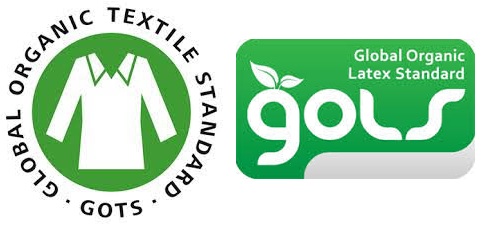
Consumer Reports has a great review of the certification labels used on organic mattresses. I was thinking I wanted to write a report like this, and then found this one.
According to their research only two certification meet their qualifications:
- Global Organic Textile Standard (GOTS)
- Global Organic Latex Standard (GOLS)
I agree. These are the certifications to look for in an organic mattress.
Here is what each of these certifications mean:
GOTS requires that at least 95 percent of the materials in the mattress be certified organic, and it prohibits outright the use of certain substances even for the other 5 percent, such as chemical flame retardants and polyurethane, the chief ingredient of memory foam.
GOLS ensures that a mattress with latex is made of organic latex, with restrictions on the other 5 percent of the mattress’s components. Natural-latex mattresses may have both the GOTS and GOLS labels.
[CORRECTION:I need to correct Consumer Reports here. GOTS does not require that at least 95% of the total materials in the mattress be certified organic. GOTS recognizes that other materials in addition to fibers are needed to make mattresses. GOTS divides the materials into two “piles”—one is the certified organic fiber and the other is the other materials needed to make the mattress. The 95% applies to the pile of fibers only. The requirement is that 95% of the fiber used in mattresses must be certified organic.]
In addition, GOTS does allow polyurethane as part of the mattress’s componets, in the 5% that is not organic fibers. This is clearly and specifically stated in the GOTS Standard 5.0, Section 2.4.9.1-d. This is specifically allowed as an “accessory” material that provides needed funcitionality, in this case waterproofing.]
Their review also explains the meaning of other certifications in simple terms.
They point out that Oeko-Tex Standard 100 doesn’t ensure that the fiber used in the mattress is produced organic all, but only sets limits for emissions of a list of harmful chemicals.
And they also explain why five other certifications you might see on a mattress have limited value.






